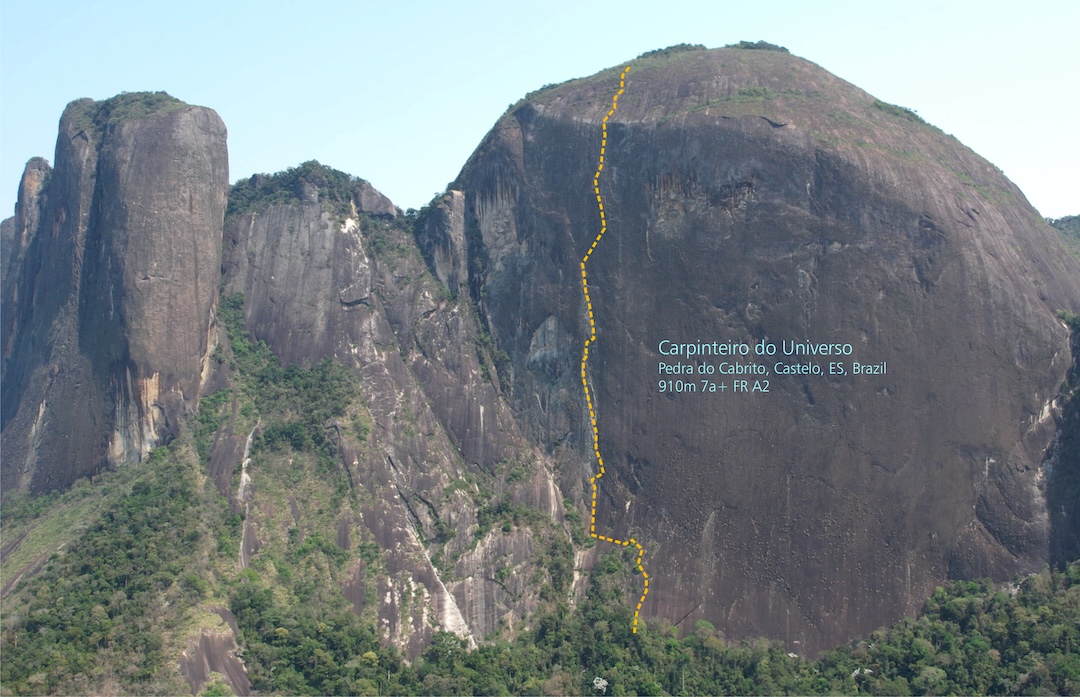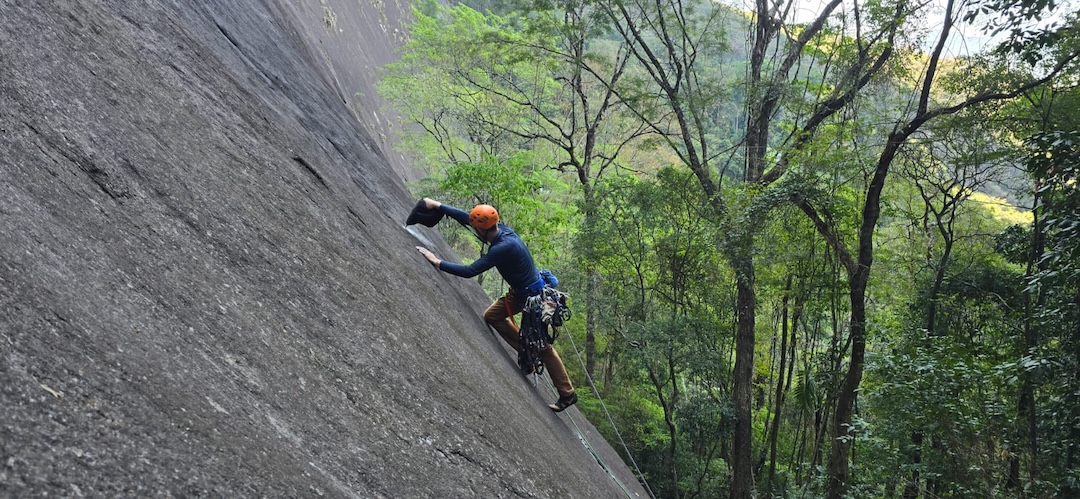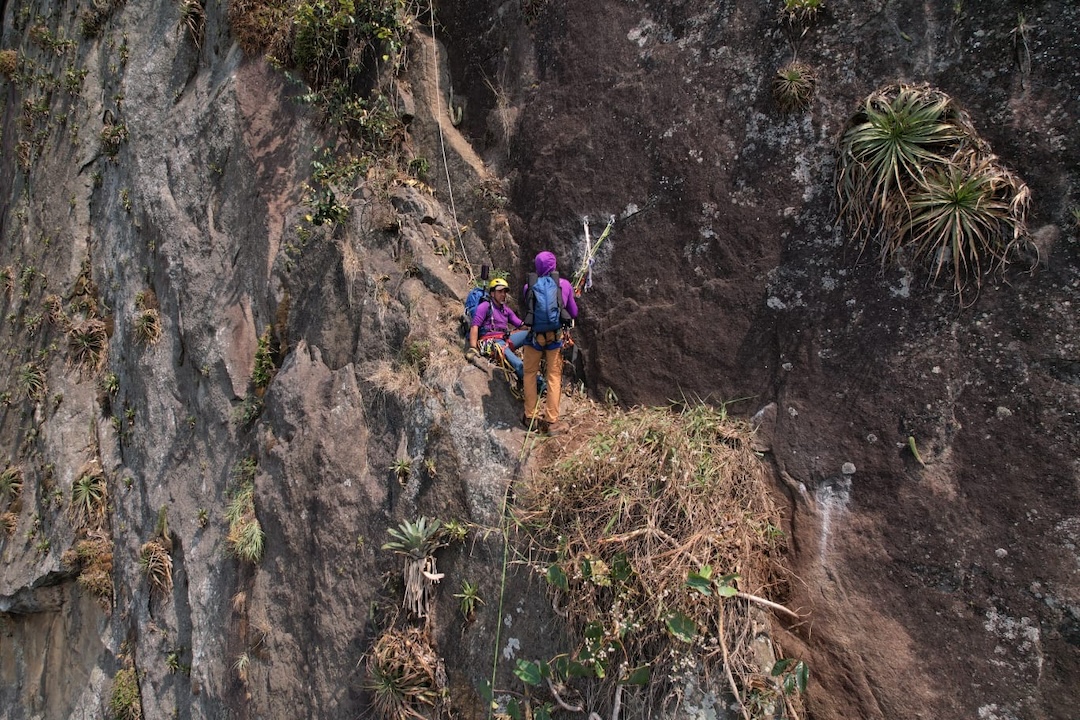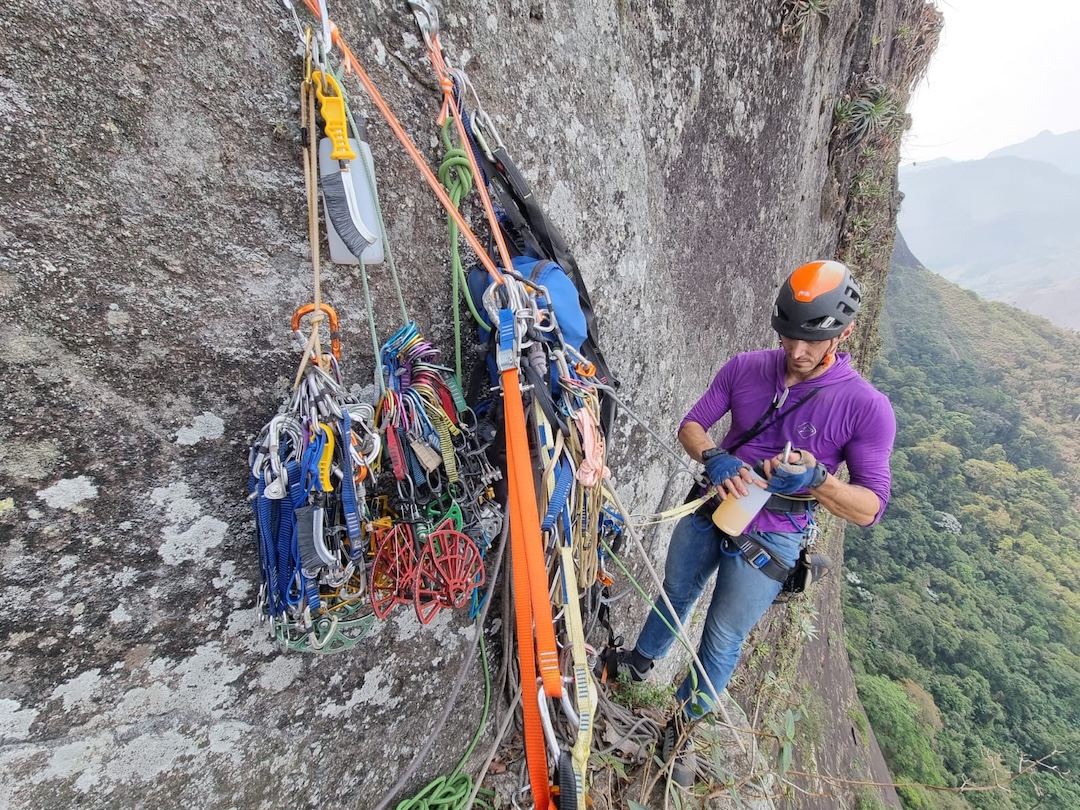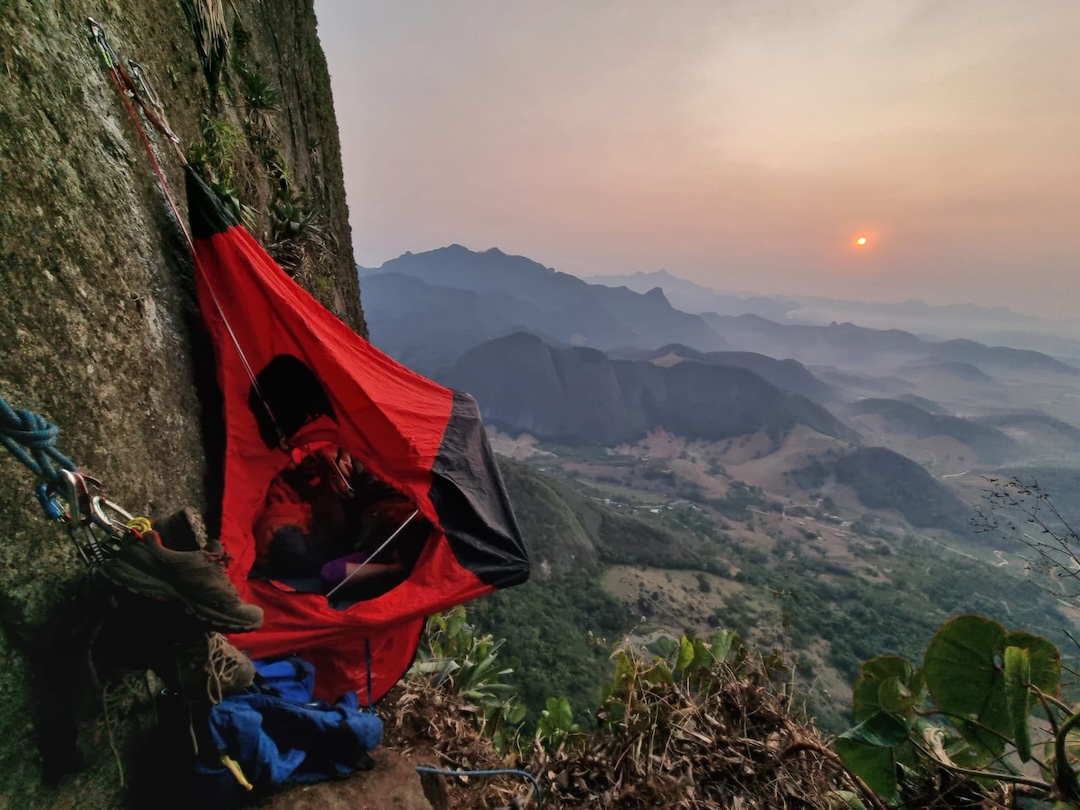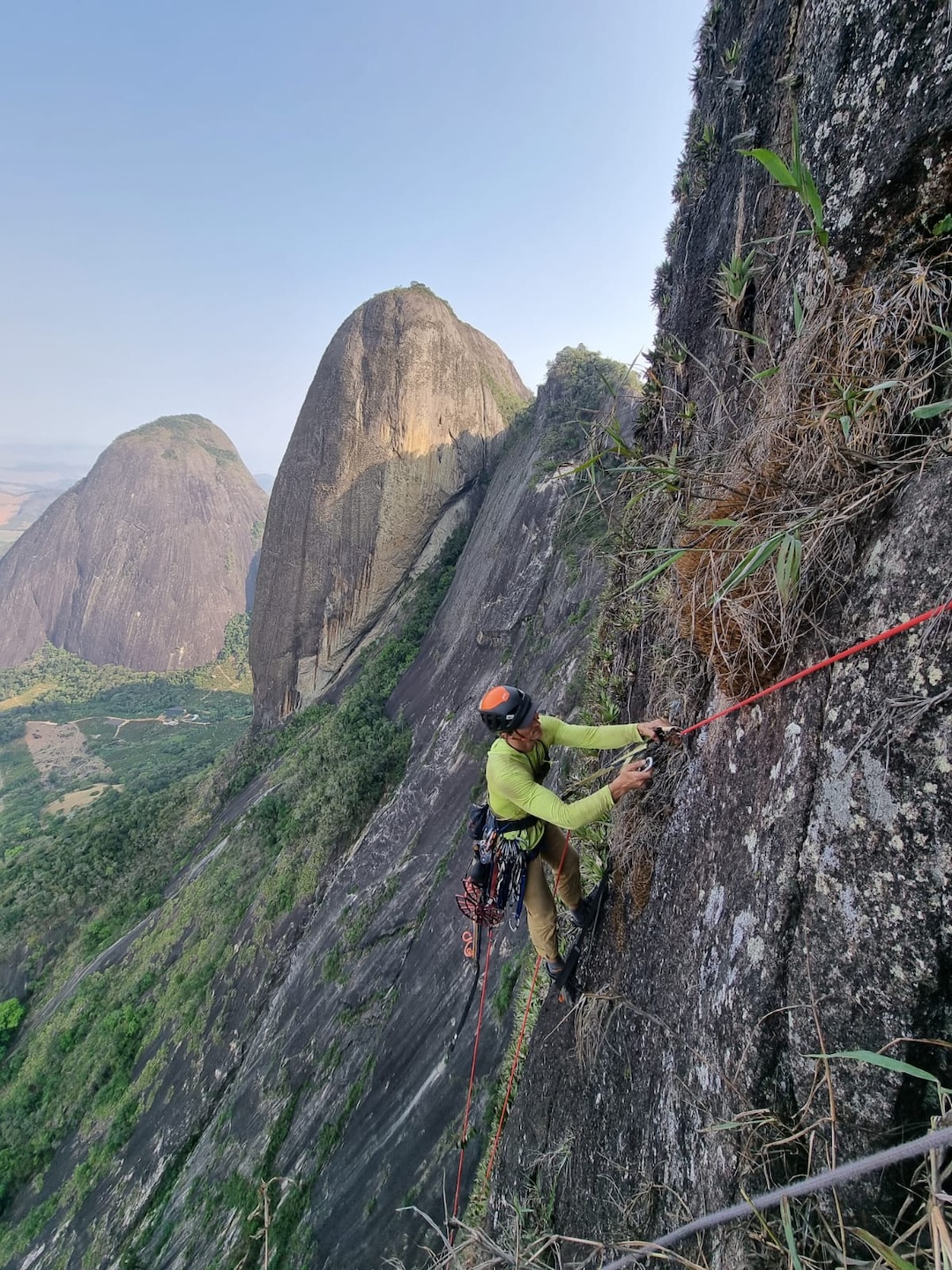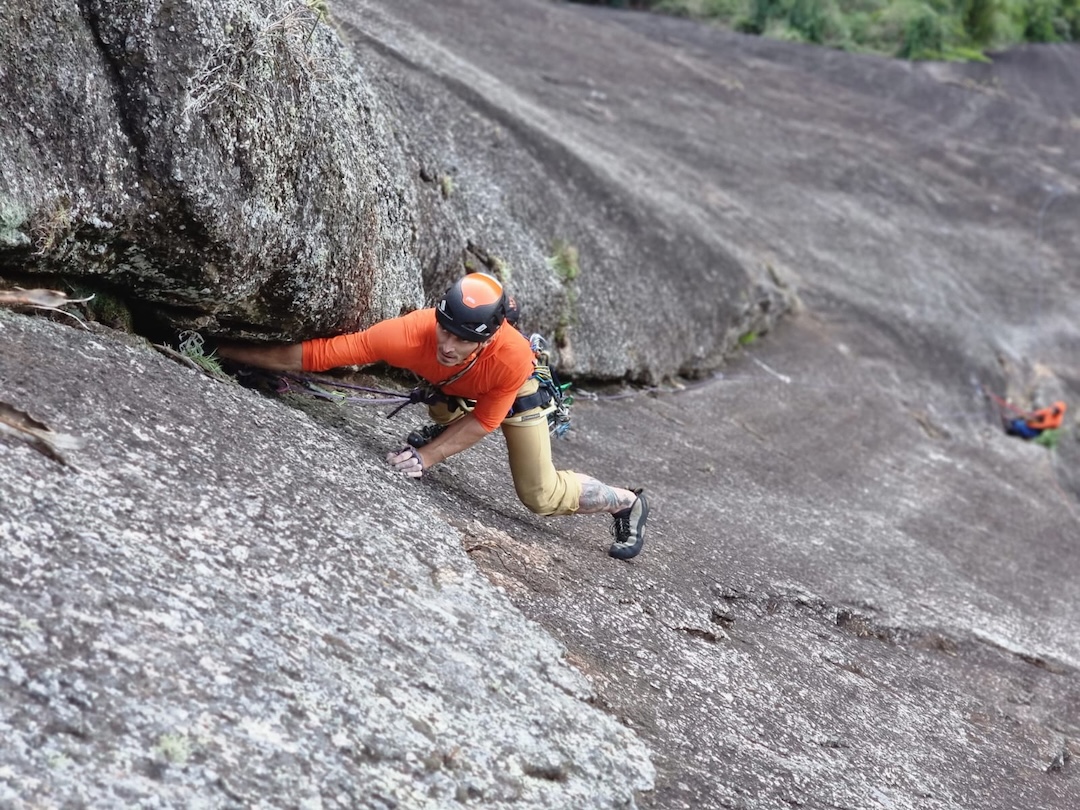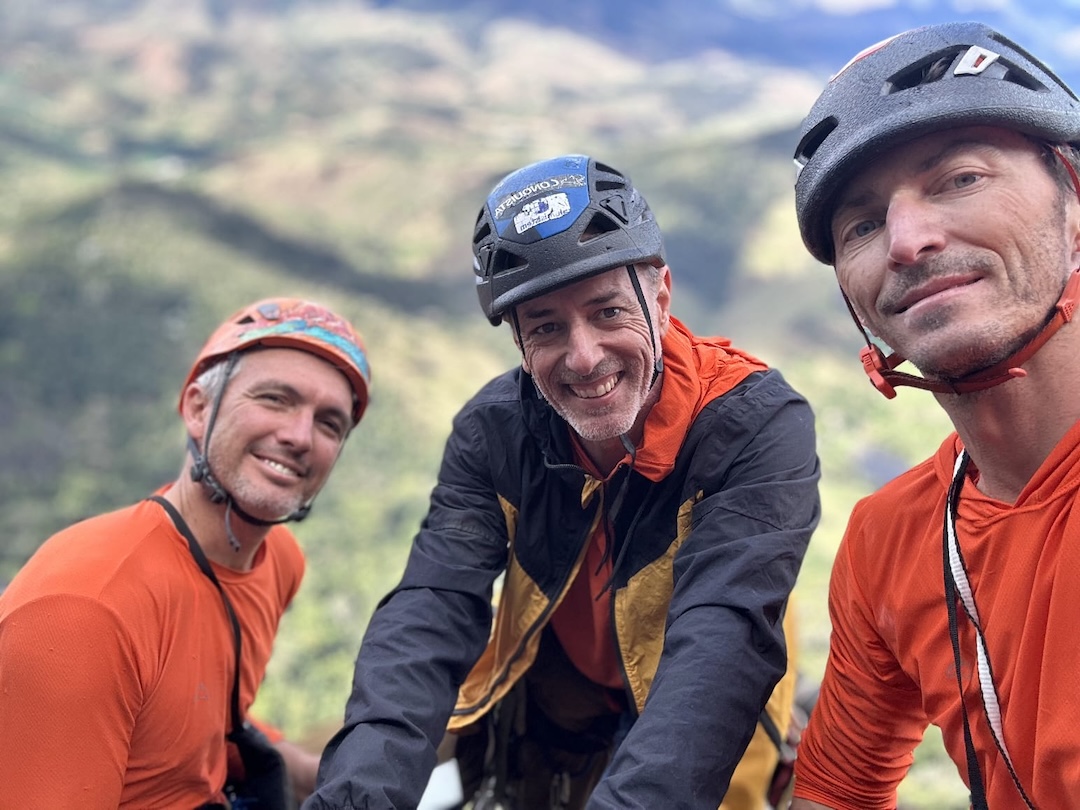Pedra da Lajinha and Pedra do Cabrito, New Routes
Brazil, Espírito Santo
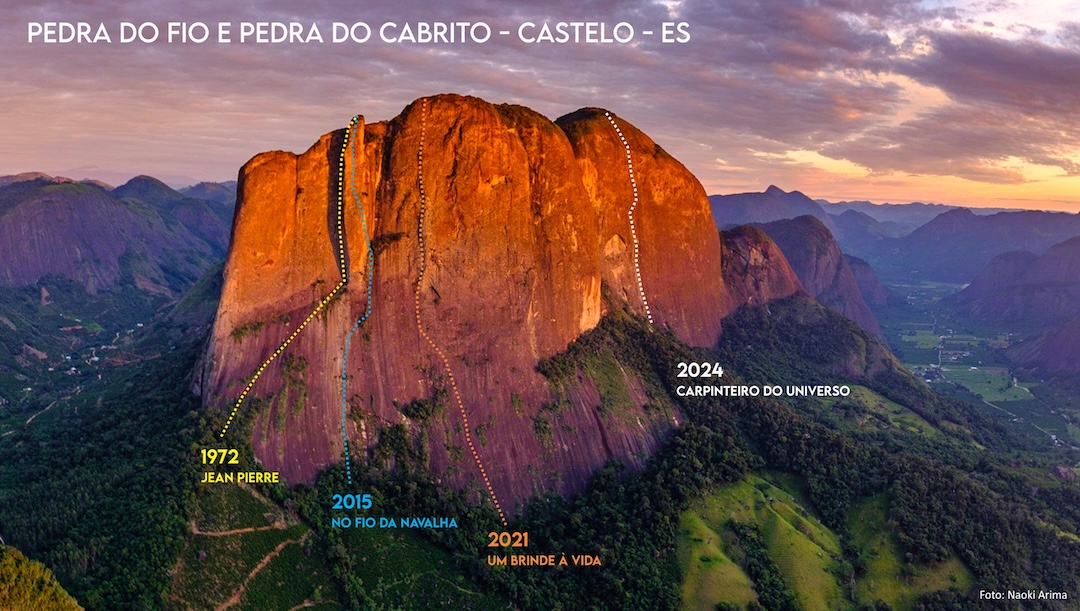
In September 2023, Willian Lacerda, Valdesir Machado, and I spent five days opening an incredible line on the southwest face of Pedra da Lajinha (20°00’21.7”S, 41°05’53.4”W), north of the city of Afonso Cláudio. Called O Trem da Minha Vida (“The Train of My Life”), our route has 830m of climbing and went completely free, with difficulties up to 7a. We protected around 80 percent of the route with bolts. There were big holes in the middle of the wall that were sheltered from the rain and could be used for bivouacs.
Pedra da Lajinha is a beautiful mountain, with well-preserved natural surroundings and a pristine farm at its base, where we stayed. This region has great potential for new routes: Ours was only the second line on this mountain, after O Tempo e o Vento (1,100m, 6c A1), climbed in June 2015 by Oswaldo Baldin, Fábio Guerra, Zudivan Peterli, Robson Silveira, and Sandro Souza.
In September 2024, Valdesir, Willan, Daniel Amorim, Javier Franco, and I returned to Espírito Santo, 1,500km from our homes in Paraná state, to attempt the first route up the southeast face of Pedra do Cabrito (20°37’08.2”S, 41°19’16.5”W), near the city of Castelo, a couple of hours south of Pedra da Lajinha.
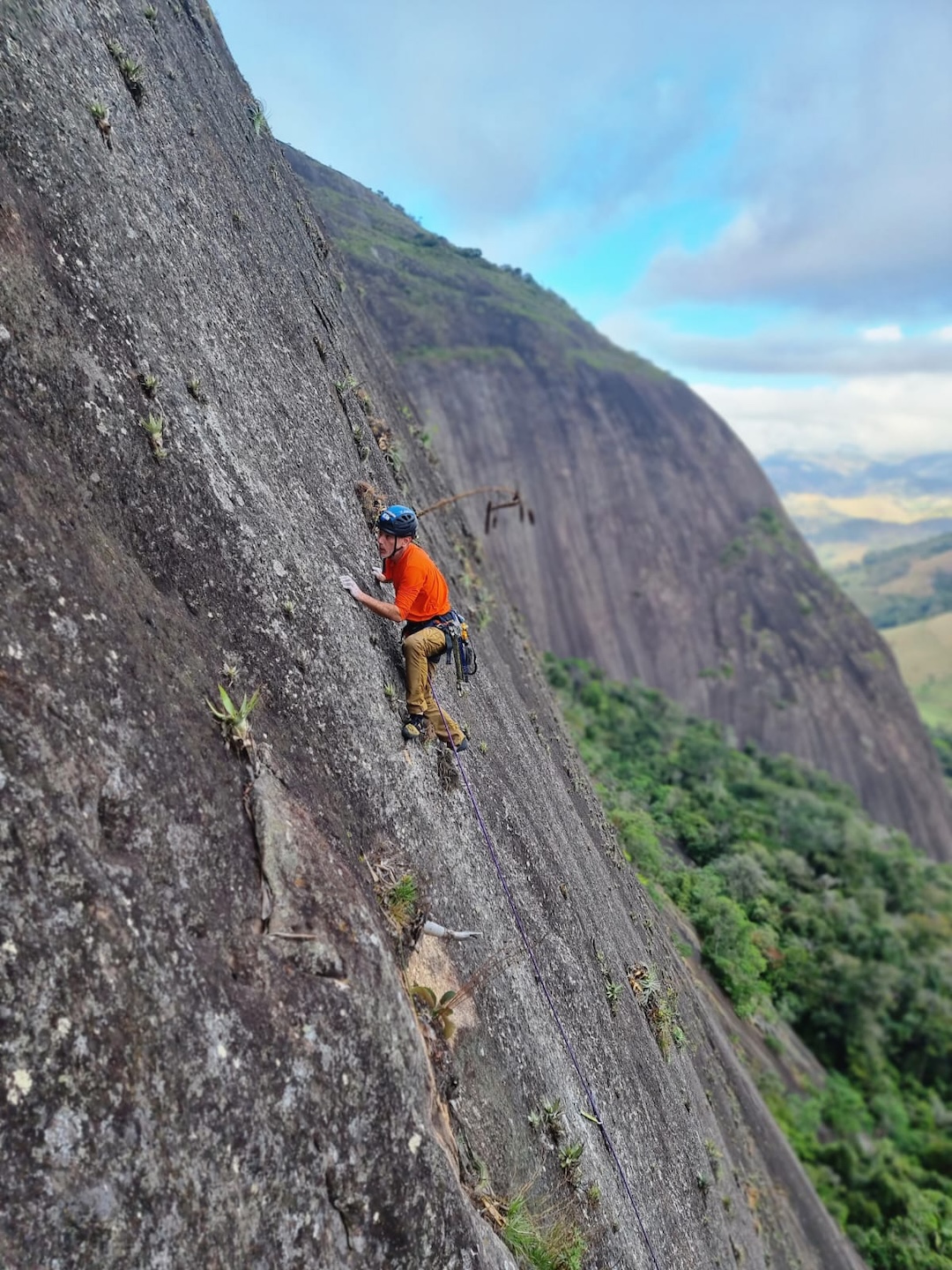
We had already been here on two other occasions, opening incredible routes on the mountain just south of Cabrito, called Pedra do Fio. The first was in 2015, when Valdesir, Elcio Muliki, and I opened No Fio da Navalha (700m, 7a+ A1) on the southeast face in four days. In 2021, Valdesir and I returned with Willan and Tomás Kampf to open Um Brinde à Vida (900m, 7b+ A1), to the right of our previous line. Um Brinde à Vida follows a slab for the first 500m before following a dihedral nearly to the top of the rock. It took us seven days to complete this line. (Prior to our efforts, Pedra do Fio had only one route, completed in 1972 by a team led by Jean Pierre von der Weid; it angled right up slabs and into a chimney on the left side of the face, at 6c+ A1.)
During our 2024 trip, we stayed in a refuge that welcomes BASE jumpers from all over the world; many believe this is the best place in Brazil to practice the sport. On our first day, we opened a trail to the base of Pedra do Cabrito that took us 20 minutes to walk. That same day, we opened the start of our route, a beautiful slab.
For another three days, we climbed a beautiful, well-marked dihedral that had good cracks, though sections were covered in dirt and weeds. On the third day, we managed to overcome two large roofs with offwidth cracks. Then we went back to the refuge and spent a night there to take a shower and rest. As it was September and we were in the middle of a heat wave, the temperatures exceeded 35ºC each day, leaving us very worn out. Beers and pizzas recharged our energy.
We then returned to the wall with portaledges and water for four nights. We set up an advanced camp about 500m up, on a slightly inclined plateau, and continued upward. Very quickly the wall became steeper and very smooth, without the possibility of free climbing. Here we drilled holes to aid for approximately 70m.
Past this, we encountered another good dihedral that took us to a final ramp. After eight total days of climbing, we reached the top of the wall, completing our route Carpinteiro do Universo (910m, 7a+ A2). We protected roughly half of the route using traditional gear and bolted the other half.
This mountain was incredible and demanding, and the surroundings were beautiful, with many birds, including toucans, and flowers in the forest at the top of the mountain. We rappelled the entire route the same day we topped out. That night, we took a well-earned shower in the refuge and had a cold beer to celebrate the achievement.
—Ed Padilha, Brazil


